Arena Breakout Infinite Esports: Competitive Play, Tactics & Tips
Updated On: November 12, 2025 by Aaron Connolly
Arena Breakout Infinite Esports Overview
Arena Breakout: Infinite jumps into the tactical extraction shooter scene, shaking up the competitive esports world with its high-stakes tournaments and pro teams.
You get intense PvPvE combat and strategic looting, which honestly makes for some wild moments when everything’s on the line.
What Is Arena Breakout: Infinite Esports?
Arena Breakout: Infinite esports is all about competitive extraction shooter gameplay.
Teams need to survive, loot, and extract while the pressure keeps building.
You’ll see pros battling in tournaments that mix up game modes—from team ops to solo survival.
Big events like the Twitch Rivals Showdown bring in top-tier gameplay and, not gonna lie, some serious viewership.
Players have to master maps like Northridge and TV Station, all while managing gear worth hundreds of thousands of in-game Koen.
Core competitive formats:
- Team elimination matches
- Solo ops tournaments
- Secure ops competitions
- Quick match 4v4 battles
Prize pools and tournament setups are still evolving since the game just hit early access in August 2024.
But the tactical depth and high-stakes gear loss? That’s what keeps fans glued to their screens.
Pro players need sharp resource management, map smarts, and instant tactical calls.
Unlike classic FPS titles, losing means you drop valuable gear. That pressure is real and you can feel it in every match.
Core Mechanics of Extraction Shooters
Extraction shooters like Arena Breakout: Infinite flip the script with risk-versus-reward systems.
Players take gear into matches and, if they die, it’s gone for good.
That’s a tension you just don’t get in respawn shooters.
Key competitive mechanics:
- Gear investment: Teams risk equipment worth up to 400,000 Koen
- Extraction focus: It’s not just about kills—you have to get out alive
- Resource management: Ammo, meds, and durability actually matter
- Map control: Grabbing top loot spots while dodging ambushes
The Season: IGNITION update brought in three new competitive modes.
Secure Ops lets you practice without risking gear, Solo Ops tests your solo skills, and Quick Match throws you into classic 4v4 gunfights.
Organisers can mix things up with different maps and gear caps.
Normal mode keeps gear values under 300,000 Koen for fairness, so nobody can just buy their way to a win.
Teams have to juggle aggressive looting and holding ground, making every match unpredictable.
If you love seeing strategy play out under pressure, this is your jam.
Key Differences from Escape from Tarkov
Arena Breakout: Infinite stands apart from Escape from Tarkov with streamlined mechanics and features built for esports.
Major competitive differences:
| Feature | Arena Breakout: Infinite | Escape from Tarkov |
|---|---|---|
| Match pacing | Faster rounds, clear goals | Longer, slower gameplay |
| Gear protection | Secure Ops mode saves gear | Lose all gear on death |
| Tournament modes | Built-in 4v4 and solo | Only community events |
| Visual clarity | Designed for streaming | Realistic, but harder to watch |
The weapon customisation system now has over 120 new attachments, so teams can really switch up tactics while keeping things balanced.
New guns like the MCX and AK-12 shake up the meta, which keeps pros on their toes.
Since the game grew out of mobile gaming, you’ll notice matches are quicker and more action-packed.
If you like constant action over slow, methodical play, this game’s probably more your speed.
Quick win: Check out Arena Breakout: Infinite tournaments on Twitch Rivals to get a feel for the scene before you dive into the deeper stuff.
Competitive Structure and Tournaments
Arena Breakout Infinite runs official leagues and big events that really highlight its tactical shooter roots.
You’ll see a lot of streamer-driven tournaments and ranking systems that reward both sharp aim and team coordination.
Official Esports Leagues
Arena Breakout Infinite unlocks its ranking system at level 10.
Once you hit that, you can jump into “Lockdown Zone” maps and start earning rating points by surviving raids.
The system tracks how you perform—survival, extraction, and combat all count.
If you mess up, you lose points, which adds a bit of stress to every match.
Key Ranking Features:
- Unlocks at level 10
- Earn points through successful raids
- Points based on performance
- Seasonal resets keep things fresh
Most top players actually focus on extracting consistently, not just racking up kills.
The ranking system seems to reward brains over brute force.
Major Arena Breakout Infinite Events
The KCDG Livestreamer Weekly Event is the big one here.
From November to December 2024, this £10,000 weekly competition had content creators battling it out for four weekends.
Each week highlights different maps and splits into two tracks:
- LOOT Track: Highest value extracted
- KILL Track: Most eliminations
Prize Structure Per Week:
- 1st Place: £2,000
- 2nd-3rd Place: £1,000 each
- 4th-5th Place: £500 each
SayHelloRoMaH (Loot Track) and AimSharpK (Kill Track) took the top spots in week one.
Tournaments usually run Saturday-Sunday, with 24-hour competition windows.
The Port Showdown is another big event, tied to new season launches.
These events get livestreamed and often have hefty prize pools.
Team Formats and Match Rules
Arena Breakout Infinite tournaments mostly go for squad-based formats—teams of 2-4 players.
The main focus is on extraction, not just wiping the other team.
Standard Match Rules:
- Teams drop into shared maps
- Goal: Extract with max loot or rack up kills
- Time limits depend on the event
- Automated tracking keeps things fair
Organisers use systems that check player streams for stats, so everything stays transparent.
Competition Formats:
- Loot Value: Highest extraction value wins
- Kill Count: Most kills in the time limit
- Mixed Format: Combined score from both
Teams that balance looting with smart positioning usually come out on top.
If you just chase kills, you’ll probably fall behind in the long run.
Esports Team Strategies
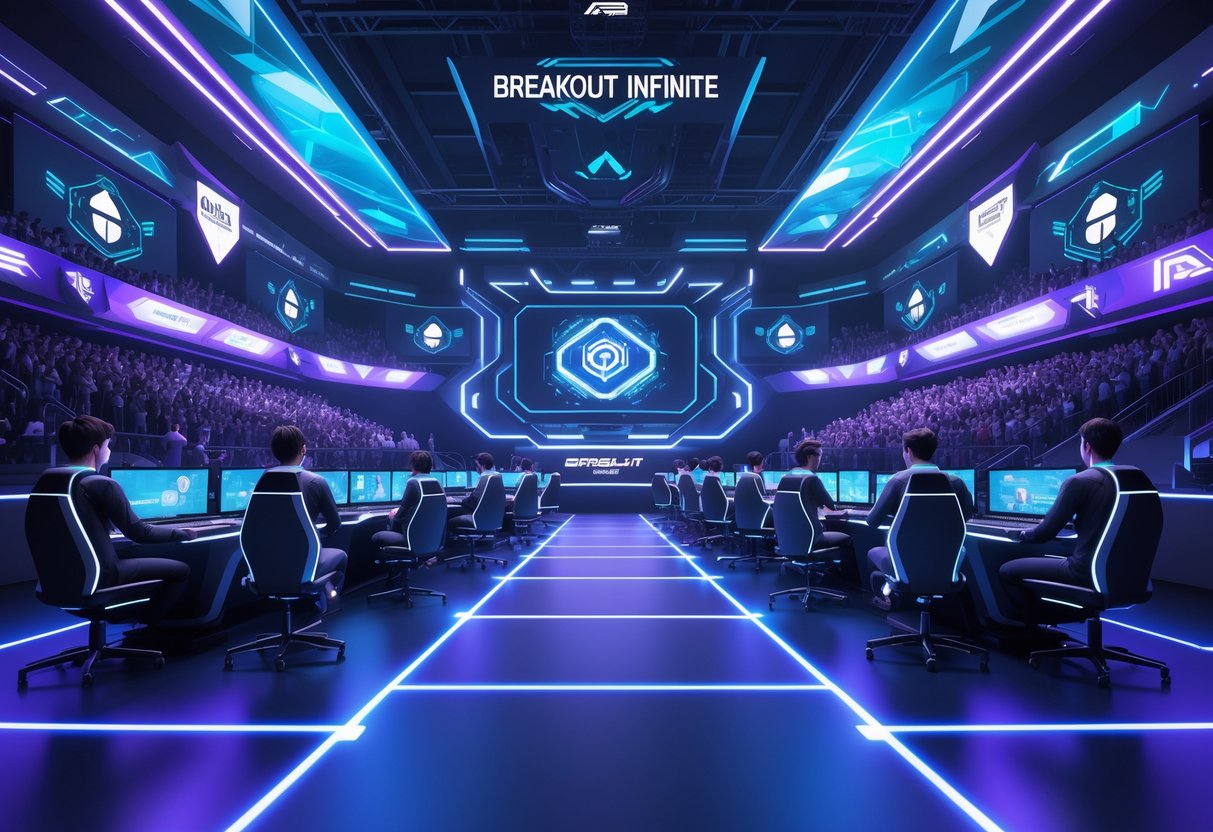
Winning teams in Arena Breakout: Infinite really nail three things—clear comms, defined roles, and making fast tactical calls.
It’s not just about aim; the mental game is huge here.
Team Coordination and Communication
Voice chat clarity can make or break a match.
Teams use set callouts for map spots and enemy locations, and everyone tries to keep it short, especially in fights.
Usually, one player acts as the primary caller and makes the big decisions.
That way, you don’t get five people yelling at once.
The caller often plays support or anchor, keeping things calm.
Information hierarchy means enemy info always comes first.
Teams drill this in scrims until it’s second nature.
Quick tip: Set up map callouts before you play. Simple names like “Blue Container” or “North Bridge” help everyone react instantly.
Most teams stick to these comms rules:
- Callouts under 5 words
- Enemy location first, then number
- Confirm big plays with “copy”
- Stay quiet in clutch moments
Role Assignments for Competitive Play
The Anchor holds down key spots and blocks pushes.
They use heavy armor and big guns, and usually live the longest.
The Scout moves fast, gathers info, and flanks.
They pick light gear and often use silencers.
The Entry Fragger leads the charge and cracks open defenses.
This player needs great aim and quick reactions—think high-damage rifles with good mobility.
The Support heals, shares gear, and covers retreats.
They tweak their loadout to fit what the squad needs each round.
| Role | Primary Weapon | Armour Level | Key Responsibility |
|---|---|---|---|
| Anchor | LMG/Assault Rifle | Heavy | Hold positions |
| Scout | SMG/Carbine | Light | Gather intel |
| Entry Fragger | Assault Rifle | Medium | Lead pushes |
| Support | Varied | Medium | Team utility |
Heads up: Don’t double up on roles.
Balanced teams almost always beat squads with too many fraggers or too many scouts.
Tactical Decision-Making
Pre-match planning covers spawn routes, first moves, and backup plans.
Teams study the competition and prep counters.
You can win a round before shots are even fired if you do your homework.
Mid-round adaptations are all about quick talks and switching plans when things go sideways.
The caller decides, but everyone can give input.
Economy management matters, too.
Teams work together on buying gear so they don’t run out of firepower mid-tournament.
Bad money choices usually snowball into losses.
Top teams always:
- Have a Plan B before starting Plan A
- Change up strats every few rounds
- Make fast decisions—hesitation kills
- Put team survival above solo heroics
Risk assessment helps teams pick their fights.
If a fight looks bad, most teams back off unless they’re desperate.
Patience often wins over raw aggression in this game.
Essential Game Modes for Esports
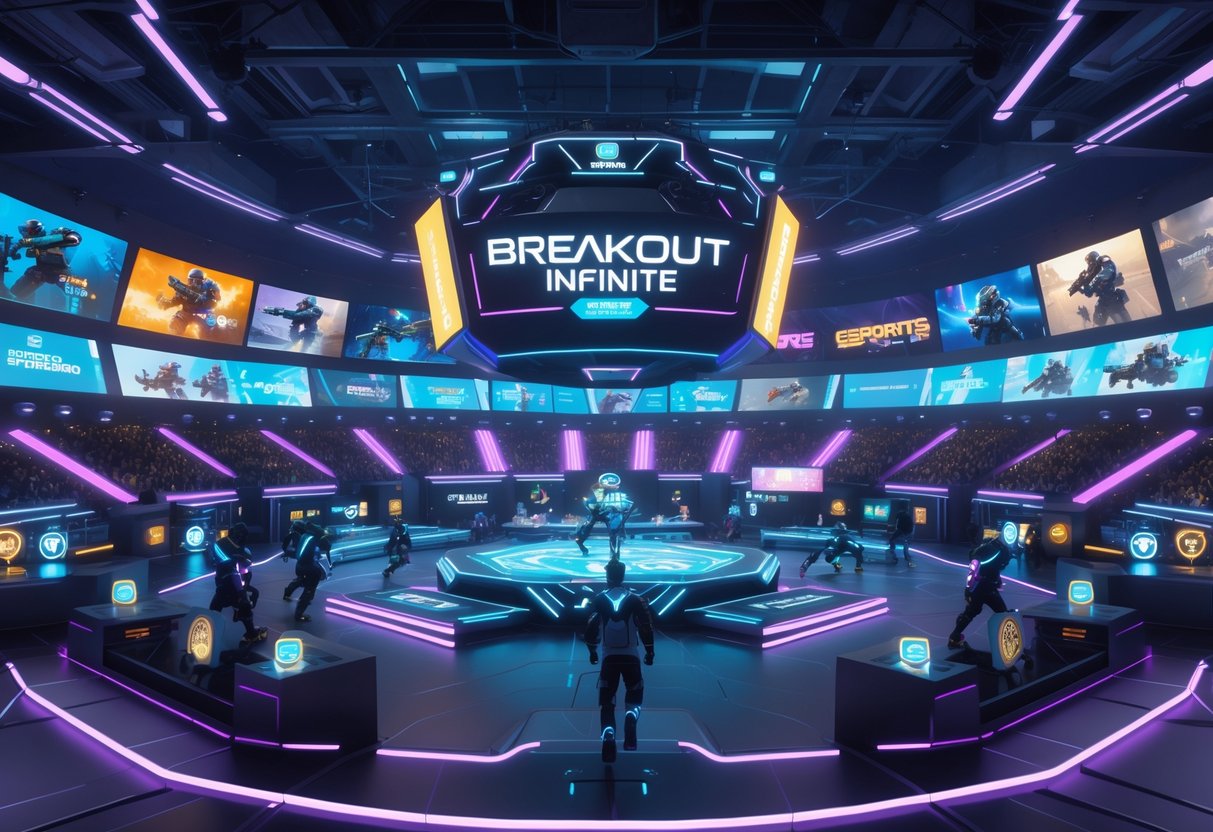
Arena Breakout: Infinite has two main competitive modes: Tactical Operations for deep strategy, and Covert Operations for adaptability.
Success in both comes down to mastering extraction mechanics and climbing the ranking ladder.
Extraction and Victory Conditions
Extraction shooters don’t just reward kills.
In Tactical Operations, teams drop into the Dark Zone with custom gear, chasing objectives and loot.
Winning means reaching extraction alive with your haul.
That creates a tug-of-war between risky looting and playing it safe.
Covert Operations switches it up with random gear at the start.
You never know what you’ll get, so teams have to adapt fast.
Matches can end in a few ways:
- Successful extraction with max loot
- Tactical retreat with some gains
- Total wipe and gear loss
Both aggressive plays and smart retreats can win games.
Teams constantly balance risk and reward, which keeps things tense and fun to watch.
Ranking Systems and Progression
Progression is tied to your character level.
You start on basic maps like The Farm at level one, then unlock tougher zones as you level up.
Higher maps require more investment:
- The Valley: Level 8+
- The North Ridge: Level 12+
- The Armory: Level 16+
This setup creates natural skill divisions for tournaments.
Organisers can set up brackets based on what maps players can access.
Just a heads up: Arena Breakout: Infinite uses gear economy for progression.
Lose your gear, and you’ll feel it, which adds real stakes to every match.
So, consistency matters more than just winning one big game.
Teams have to keep their gear stash healthy while moving up the ranks.
Weapons and Loadouts in Competitive Play
Pro Arena Breakout: Infinite teams really lean on three core weapons that shape the whole competitive meta. Players spend a lot of time tweaking attachments for these guns, chasing any edge they can get in tournaments.
Some weapons, like the AKS-74U, fill unique tactical roles. Not every team uses them the same way, but they’re definitely part of the meta.
Top Weapons for Esports Teams
The FAL assault rifle sits at the top of pro play since it’s the only gun that supports T6 ammo. Its damage is just wild, so most competitive teams can’t afford to skip it.
Teams usually build around the FAL’s strengths. It shines in medium-range fights, and that’s where a lot of big moments happen.
The MPX submachine gun lets teams dominate up close. The recoil’s barely there, so players can just spray and stay on target.
Pros love the MPX for fast pushes and clearing buildings. Sure, it’s a bit pricier, but the fire rate makes up for it in clutch situations.
The SJ16 bolt-action rifle is the go-to sniper choice. Teams use it for picking off targets at range and locking down lanes.
One clean shot from the SJ16 can end a fight. Pros usually slap on a 6x scope and a .338 muzzle break to get the most out of it.
| Weapon | Role | Primary Use |
|---|---|---|
| FAL | Primary AR | Medium-range combat |
| MPX | Close-quarters | Building clearing |
| SJ16 | Sniper | Long-range elimination |
Optimising Weapon Attachments
Recoil control attachments really matter for competitive builds. Teams grab grips and stocks first to cut down on weapon sway during long sprays.
The FAL gets a lot out of short rails and lasers for better handling. These tweaks help it stay flexible in high-stakes matches.
Pro MPX builds usually chase stability over raw damage. Teams give up a little punch for the sake of landing every shot when it counts.
Muzzle attachments change depending on what the team’s up to. Some go for suppressors to sneak around; others slap on compensators to fight recoil.
Scope selection comes down to map knowledge and where the team plans to hold. Most top players skip high-zoom scopes on ARs to stay adaptable.
Teams sometimes standardise attachments across players who run the same weapons. It keeps things simple and cuts down on costs.
Quick win: Start out with basic recoil-reducing attachments before blowing cash on fancy optics.
The Role of the AKS-74U
The AKS-74U fills a special niche in competitive Arena Breakout: Infinite. It’s compact and perfect for those tight, up-close fights.
A lot of teams bring the AKS-74U for certain map spots. It’s awesome in cramped corridors where long rifles just get in the way.
Budget-minded teams often lean on the AKS-74U to save money. It’s cheap, so they can spend elsewhere.
The intermediate cartridge gives it solid stopping power, making it a good pick for players who bounce between support and assault roles.
Attachment choices usually focus on mobility. Teams tend to add foregrips and simple sights, skipping the heavy mods.
Pros like how reliable the AKS-74U feels when things get intense. It rarely jams and just keeps working, no matter the map.
Some teams bring it out for eco rounds. It’s a good way to keep some firepower without breaking the bank.
Tactical Gameplay and Map Mastery
Winning in Arena Breakout: Infinite really comes down to knowing your maps, dodging danger zones, and controlling the spots that matter. These skills are what set apart casuals from the teams that actually win stuff.
Navigating the Dark Zones
Dark zones are risky but packed with loot. They also attract the most aggressive players and some nasty AI.
It helps to study where these zones are before you drop in. Most have a few entry points, but seasoned players often camp the most obvious ones.
Key dark zone tactics:
- Use less-traveled routes to get in
- Move fast from cover to cover
- Always have a backup escape plan
- Listen hard for footsteps or reloads
Sound gives away a ton in dark zones. If you hear someone healing or reloading, you know you’re not alone.
Assign roles before heading in. One player should watch for threats while the others loot. This keeps the whole squad from getting wiped at once.
Effective Extraction Tactics
Extraction points turn into war zones as teams race for an exit. How you approach extraction can make or break the run.
It’s smart to pick out backup extraction points early. The main exit usually draws the most heat, especially near the end.
Smart extraction strategies:
- Get to extraction 2-3 minutes early
- Sweep the area before calling for extraction
- Set up one teammate as overwatch
- Keep meds handy for last-minute heals
You need solid comms during extraction. Call out enemy spots and make sure everyone knows the plan.
People lose matches by rushing extraction without checking for trouble. Take a second to scout it out before you commit.
Map Control and Positioning
Owning key spots on the map gives your team a real edge. High ground, chokepoints, and center areas matter most.
We look for three main spots: places to gather intel, strongholds to defend, and routes to rotate quickly.
Essential positioning principles:
- Grab high ground if you can
- Lock down building entrances and exits
- Watch main pathways
- Always have more than one way out
Switch up your positioning based on what’s happening. Early-game moves aren’t the same as late-game setups.
Teams need to coordinate for strong map control. Overlapping fields of fire and mutual support are huge. Someone should always have eyes on a teammate to cover them if things go south.
In-Game Events and Seasonal Content
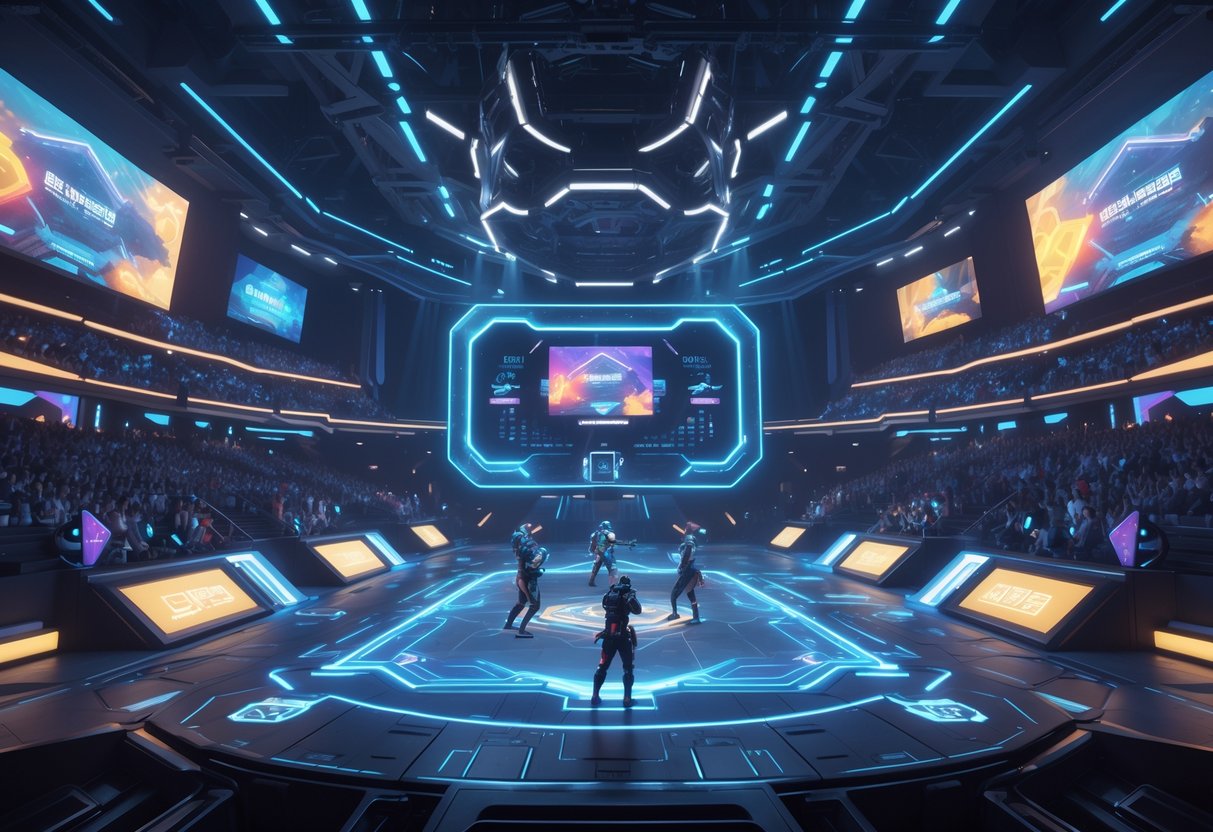
Arena Breakout: Infinite keeps things fresh with seasonal updates and special events. Season 2: Crimson Edge is running now, bringing structured rewards and time-limited challenges.
The event system gives both casual and competitive players plenty to do, feeding into the growing esports scene.
Esports-Focused Events
Arena Breakout: Infinite runs a bunch of events aimed at the competitive crowd. Season 2 brings extraction missions and PvP challenges that feel a lot like tournament formats.
New event highlights:
- Fog Event and Storm Event modes
- Farm Assault and Armory Assault competitions
- Female operatives join the fight
- Eight new weapons, including the T03 and Vector 9/45
These events don’t last forever. Season 1 kicked off on 20 November 2024 and brought in the TV Station map with those nasty toxic traps.
Quick win: Use seasonal events as practice before jumping into tournaments. The formats are usually pretty similar.
The next Ignition Season promises even more competitive modes. We’re expecting a ranking system that’ll tie into the bigger esports ecosystem.
Rewards and Incentives
Arena Breakout: Infinite dishes out rewards for both casual and hardcore players.
Here’s what’s up for grabs:
- Daily login bonuses
- Seasonal battle pass tiers
- Loot from missions
- Level-up rewards
- Extraction-specific prizes
Season 2 has over 100 new cosmetic items and weapon unlocks. The battle pass gives players something to grind for all season.
Heads up: Some rewards are only around for a limited time. Miss an event, and you might lose out on some nice competitive perks.
The devs have a cheater compensation system to keep things fair. They also nerfed T7 weapons recently to balance the playing field.
Next step: Log in every day during the season to rack up rewards and stay in the game.
Player Health and Survival Mechanics
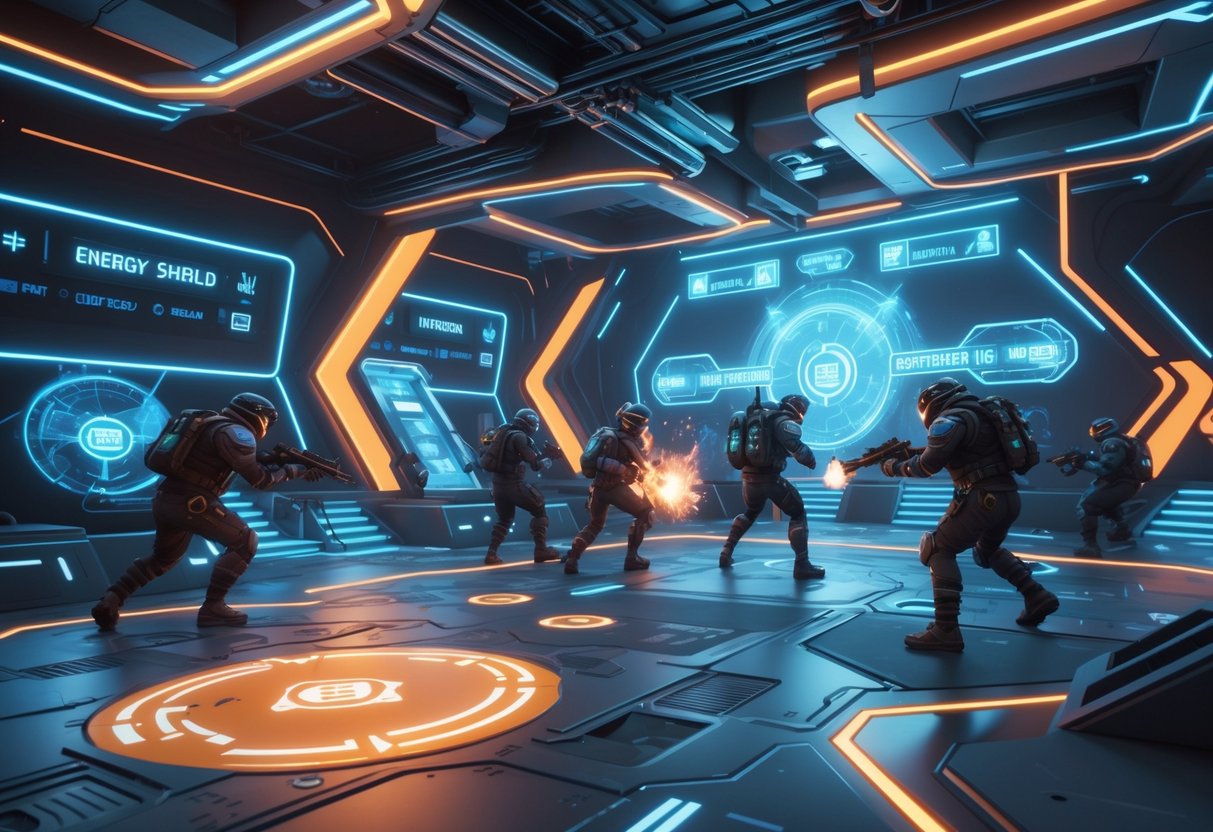
Arena Breakout Infinite uses a detailed body part health system. Players get 445 total health points, split across seven areas.
Managing injuries, debuffs, and med supplies is a constant challenge if you want to compete at the top.
Managing Injuries and Debuffs
Head and chest shots are instantly fatal in Arena Breakout Infinite. The head has 40 HP, the chest 85 HP.
Each arm gets 60 HP, each leg 65 HP, and the abdomen holds 70 HP.
If a limb drops below max health, you get an injury status. The area turns red, and you’ll see red veins on your screen.
Broken limbs are a huge problem for pros. Break an arm, and your aim gets shaky, recoil control drops, and you search slower.
Break a leg, and you move slower, can’t jump as far, and take more fall damage. A broken abdomen burns through hunger and thirst way faster.
Pain debuffs mess with vision and aim. Most hits cause temporary pain, but broken limbs keep hurting until you treat them.
Pros sometimes pop painkillers ahead of time to skip these effects when things get tense.
Explosions can cause tinnitus, wiping out your sound compass and blocking audio cues. Tactical earphones help a bit, but not completely.
Gas attacks can injure your lungs, draining stamina and making your character cough—a dead giveaway.
Item Use and Resource Management
Bandages stop bleeding from limbs that keep losing HP. Use them fast to avoid bleeding out mid-fight.
Medkits heal up damaged parts. Higher-tier kits restore more health, so teams always go for the best they can get.
Surgical kits fix broken limbs right in the match, no need to wait for extraction. They restore function but lower max HP depending on the kit.
Teams usually pick one player to carry surgical gear.
Painkillers temporarily block debuffs from injuries and broken bones. They let you sprint and aim steady for a bit, even if you’re still hurt.
Pro teams time painkiller use for tactical moments.
Managing resources gets tricky at the top level. Teams have to balance med supplies with ammo and utility.
Most squads let support players handle the healing gear, freeing up others to carry more firepower.
Community and Competitive Scene
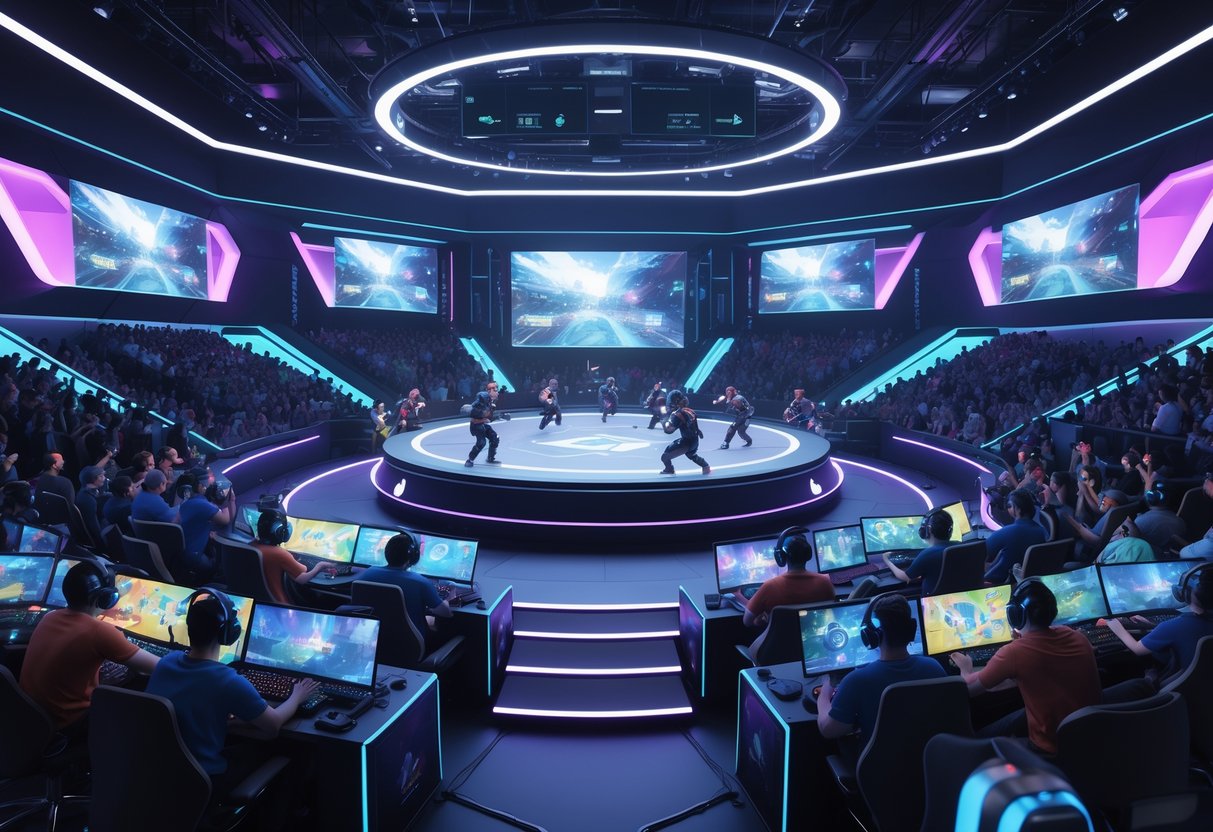
Arena Breakout: Infinite has built up an active streaming community with regular tournaments. The competitive scene’s still growing compared to bigger shooters, but there’s a buzz.
The game draws in content creators and runs organised events with serious prize pools.
Top Teams and Players
Right now, Arena Breakout: Infinite’s competitive scene revolves around individual streamers more than big orgs. SayHelloRoMaH has been crushing it, picking up £1,600 ($2,000) in the KCDG Livestreamer Weekly Event’s loot track.
AimSharpK leads the kill-focused side, taking first place for total eliminations in the same tournament. QuattroAce and mellomate also made strong showings, grabbing second place in their categories.
The main competitive tracks are:
- Loot Track: Highest value extraction wins
- Kill Track: Most eliminations in a match
Most of these top players are streamers first, competitors second. It makes for a scene where personality and skill both matter.
Growth of the Esports Community
Arena Breakout: Infinite’s growth leans hard on developer-backed events. The KCDG series ran four weeks with £8,000 ($10,000) weekly prize pools—not bad at all.
Community highlight reels have started popping up, showing off crazy plays and drawing in new viewers. These clips help promote both the game and the creators behind them.
The game’s facing the usual new-title hurdles. Without big orgs or leagues, everything depends on the devs keeping creators interested with events and cash prizes.
Heads up: The competitive scene still relies a lot on official support, not grassroots tournaments. That could be a problem for long-term growth.
Arena Breakout Infinite vs. Escape from Tarkov
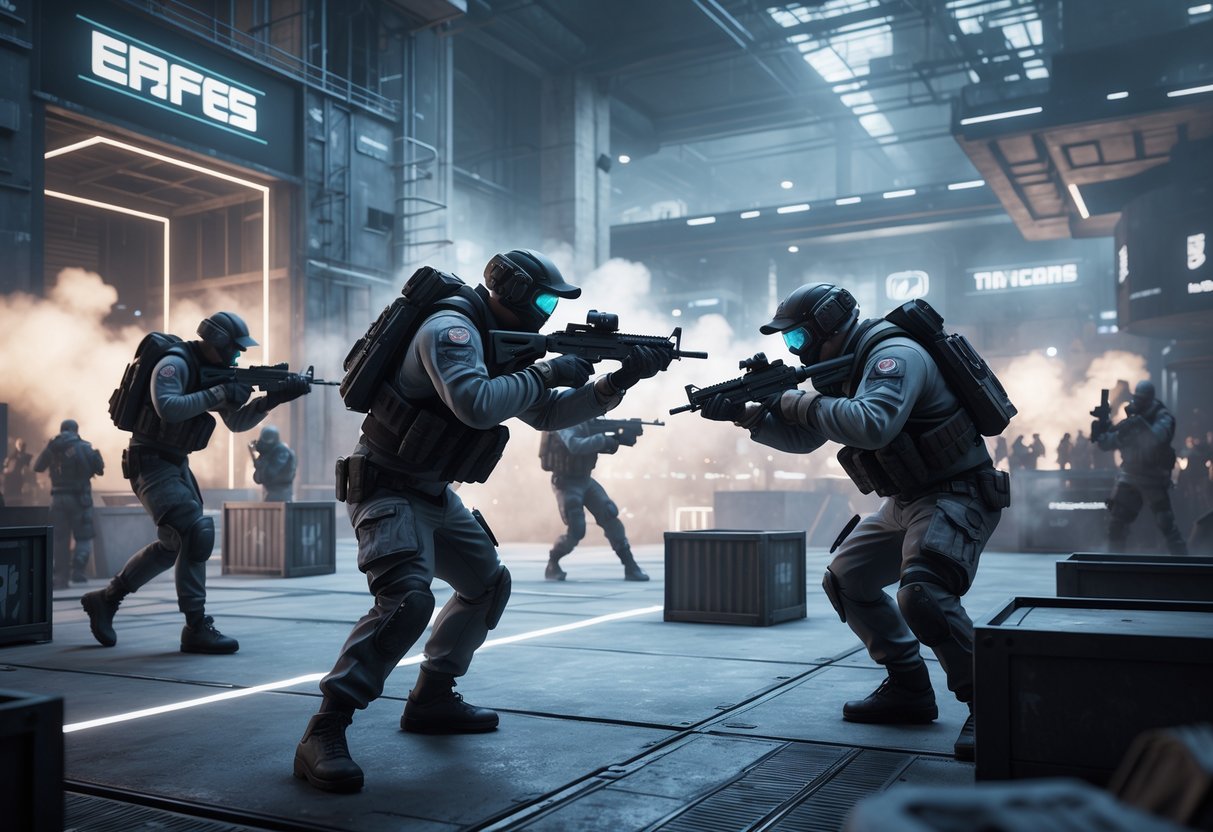
Arena Breakout Infinite just jumped into the extraction shooter scene and is going straight at Escape from Tarkov. It brings faster matchmaking and easier-to-use features.
This rivalry is really pushing developers to rethink how they build extraction shooters for esports.
Gameplay Comparisons
Arena Breakout Infinite actually runs smoother than Escape from Tarkov. On similar hardware, you’ll see about 23-25% better performance.
Loading times are a game-changer—Arena Breakout drops you into matches in 30-45 seconds, while Tarkov sometimes makes you wait 2-4 minutes. That’s a big deal if you’re competitive.
Arena Breakout makes things a lot more accessible. You get built-in maps, compass overlays, extraction point markers, and can always see your teammates on the HUD.
Tarkov, on the other hand, makes you find separate map items and compass tools, and you lose them if you die. That’s… not exactly beginner-friendly.
Key gameplay differences:
- No friendly fire in Arena Breakout, so you don’t have to worry about trolls on your team.
- Knockdown system lets your squad revive each other.
- Free-to-play model compared to Tarkov’s hefty £40-£200 price tag.
- Lower learning curve thanks to tutorials and helpful reminders.
Arena Breakout gives you a firing range where you can try any weapon with unlimited ammo against different armor types. Tarkov keeps its firing range locked behind progression and crafting.
Weapon customization feels super similar in both games, but Arena Breakout helps you out with green highlights for compatible attachments and ammo.
Impact on the Esports Meta
Arena Breakout Infinite’s streamlined features just make it more esports-ready. Faster loading and better performance are a huge plus for tournaments and streams.
Without friendly fire, teams can push aggressively. You don’t get the coordination nightmares that Tarkov squads face.
The knockdown system adds those tense revival moments that viewers love. It’s fun to watch and even better to play.
Esports advantages:
- Consistent performance no matter your hardware.
- Built-in comms tools with HUD teammate tracking.
- Standardized map knowledge—no outside resources needed.
- Lower barrier to entry for new competitive players.
Because Arena Breakout is free-to-play, more people can jump in. Teams can recruit without worrying about game costs, which could really grow the competitive scene.
Still, Arena Breakout’s mobile roots might make some PC esports folks skeptical. Extraction shooters as a genre haven’t proven themselves at the level of CS2 or Valorant yet.
Future of Arena Breakout Infinite Esports
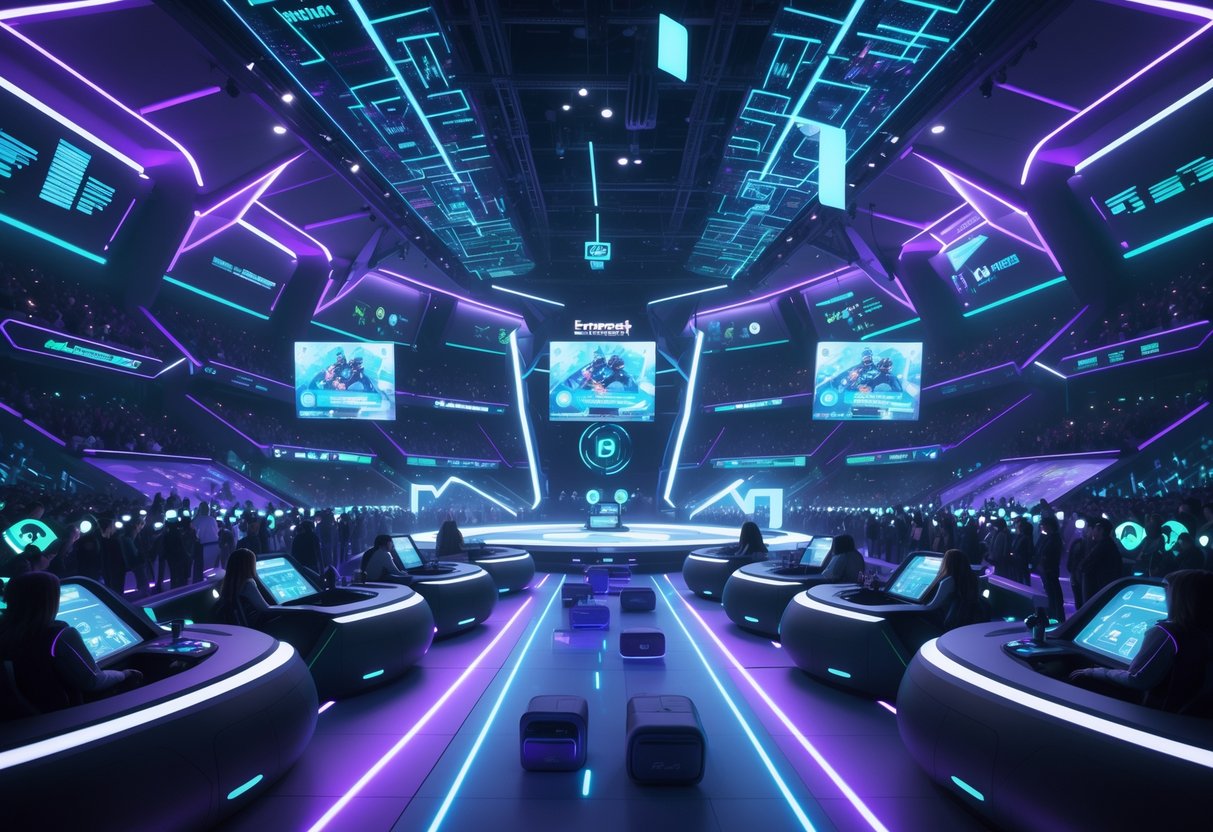
Arena Breakout: Infinite’s competitive scene is about to blow up. The devs at MoreFun Studios are lining up tournaments and big gameplay updates for 2025.
They’re actually listening to the community and working on the esports infrastructure to fix core competitive issues.
Upcoming Tournaments
The Future Legends tournament is a big moment for Arena Breakout: Infinite. It’s the first real sign the game’s aiming for serious esports.
Team Spirit officially joined the Arena Breakout scene. That’s pretty huge—having a legendary org on board brings instant credibility.
We’re seeing more tournaments pop up, and they’re getting bigger. Prize pools are rising, and more pro teams are jumping in.
Key tournament developments:
- Better production for broadcasts
- Teams from around the world
- Structured leagues
- Regional qualifiers
These events will help Arena Breakout: Infinite get taken seriously. When big esports orgs show up, it means they see potential.
Potential Game Updates
Competitive modes are on the way for 2025. Elimination and Team Deathmatch are coming, built just for esports.
A new Solo Mode is launching as an experiment. It’s what players asked for, and it’ll give more options to competitive folks. Should be interesting to see how it plays out.
Sound accuracy improvements are in the works. Better audio cues will help players react faster and make smarter moves.
Thermal nerfs are coming—no more seeing through scopes. That’s more realistic and should balance things out. M61 rounds are also getting nerfed.
Spawn and extraction tweaks will hopefully cut down on frustration. Balancing player counts means fairer fights, which is what the scene needs.
The Northridge map is getting an expansion. Future maps will have more spawn points and dynamic weather, so pros will need to adapt their strategies.
Frequently Asked Questions
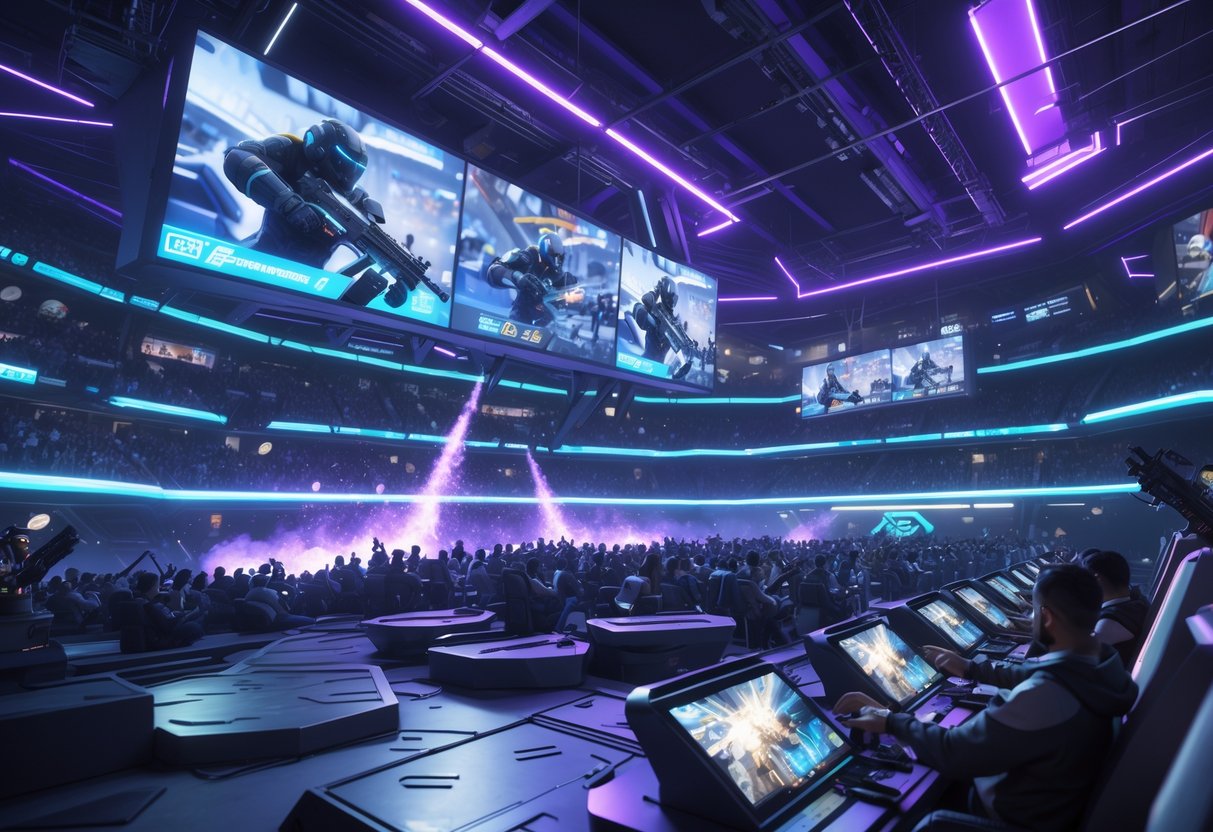
Players always have questions about Arena Breakout’s competitive requirements, tournament rules, and how to follow the pro scene. Let’s clear up the basics—from getting started to finding the best matches.
How can new players get started with competitive play in Arena Breakout?
You have to reach level 10 to unlock ranked matches in Arena Breakout Infinite. This opens up three competitive maps: Valley, Farm, and Armory.
Start with casual matches. Get used to the maps, learn how the guns feel, and figure out the extraction shooter vibe before you try ranked.
When you hit level 10, turn on the Rank Points system before you queue up. You’ll earn points for taking down AI and other players—higher-level enemies give you more points.
Heads up: If you fail to extract, you lose rank points. Focus on surviving and getting out, especially at first.
You’ll start in Rookie III and climb through seven rank categories. Every tier has three divisions, so it’s a grind to reach Legend.
What are the latest rule changes affecting Arena Breakout esports tournaments?
Arena Breakout Infinite rolled out its season system in Early Access in August 2024. Now, everyone’s ranked the same way in competitive play.
You need to keep performing well to hold your rank. Lose matches or fail extractions, and you’ll drop points based on your tier.
Tournament organizers use the official ranking system to decide who can play. Most events want you at Elite rank or above.
Quick tip: Follow Arena Breakout’s official socials for rule changes. Formats can shift between seasons.
Season objectives now give out exclusive rewards—rare items, titles, and gold keys. These perks push more players toward ranked.
Which teams are currently leading in the Arena Breakout esports scene?
Arena Breakout Infinite’s competitive scene is still pretty new after Early Access. Most big teams are just now moving over from the mobile game.
Pro orgs are starting to scout top-ranked players from the Legend tier. These folks show consistent, high-level play season after season.
Regional tournaments are popping up in Asia, Europe, and North America. Each area has its own style and tactics.
Honestly, right now it’s better to follow individual streamers and creators for insights. The next wave of pros are building their names on stream.
Keep an eye out for announcements from big esports orgs. Some traditional FPS teams are eyeing Arena Breakout as their next move.
What tips do seasoned players suggest for improving strategy in Arena Breakout?
Map knowledge is king. If you know where to extract, where the loot is, and where players usually go, you’ll have a big advantage.
Learn how the economy works. Knowing when to risk expensive gear or play it safe makes a difference as you progress.
Pro tip: Analyst James Connolly says top Arena Breakout players treat every match like a business call—balancing possible profits against gear risk.
Try different playstyles as you rank up. In Rookie, it pays to play safe and focus on survival. Higher ranks reward more aggressive tactics.
Review your deaths. Most people lose rank points because they’re out of position, not because they can’t aim.
Where can fans watch the most exciting Arena Breakout esports matches?
You’ll find most Arena Breakout Infinite streams on Twitch. Search for players with “Legend” in their titles—they’re usually the best.
YouTube has tournament highlights and how-to videos. A lot of pros post match breakdowns and strategy guides there.
The official Arena Breakout channels announce big events. These streams sometimes feature developer commentary and sneak peeks.
Quick tip: Tune in to top streamers during the evening—that’s when the best matches go live.
Discord groups run unofficial tournaments with cash prizes. Hop into server communities to find regular competitive events.
What are the upcoming major Arena Breakout esports events?
Arena Breakout Infinite’s official esports calendar isn’t quite ready yet after the Early Access launch. The devs usually drop big news on the game’s main channels, so you’ll want to keep an eye there.
Regional qualifiers should kick off in early 2025. These qualifiers will probably decide who gets to compete in the first official world championship.
Some third-party organizers are already lining up events, and prize pools range from just a few hundred to several thousand pounds. In the meantime, the community is stepping in with their own competitions while we wait for the official stuff to land.
Warning: Watch out for unofficial tournaments that ask for entry fees. Seriously, it’s safer to stick with trusted platforms and organizers you can actually verify.
The global Steam release will probably drop right as the first big competitive season starts. That’s a smart move—it’ll bring in the most players and viewers possible.

